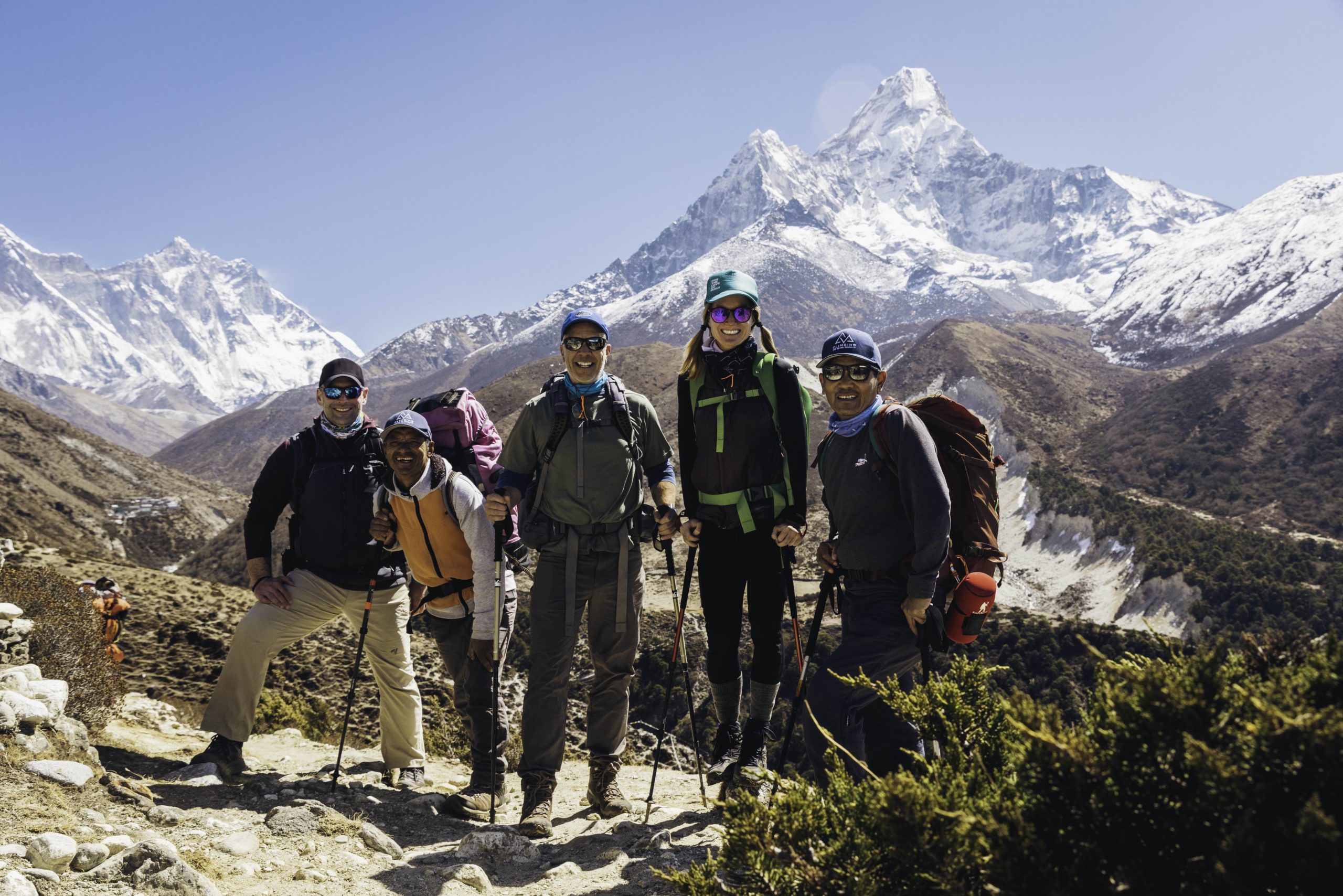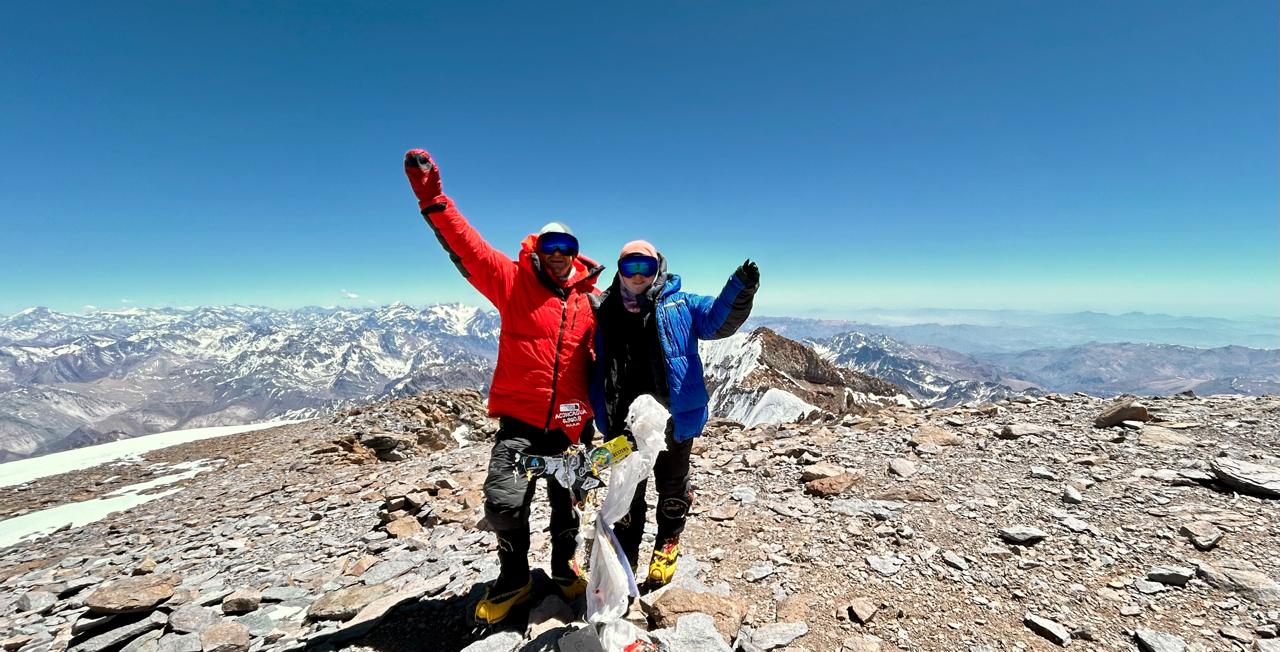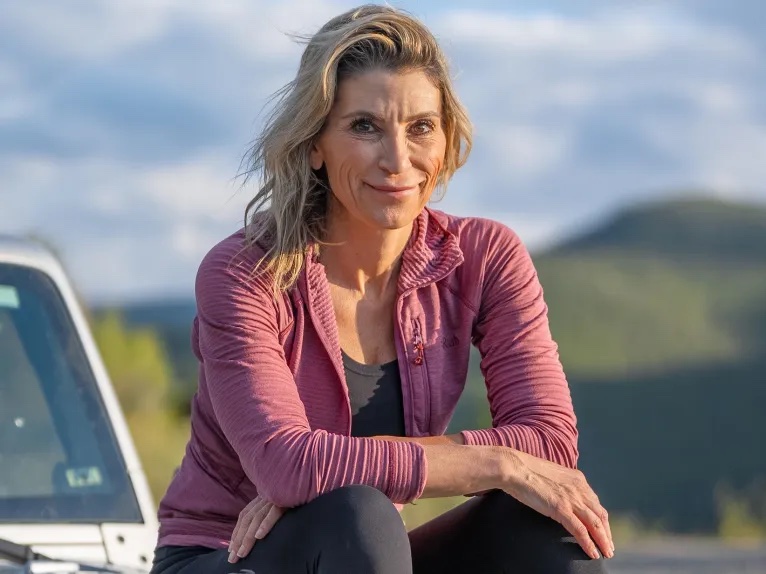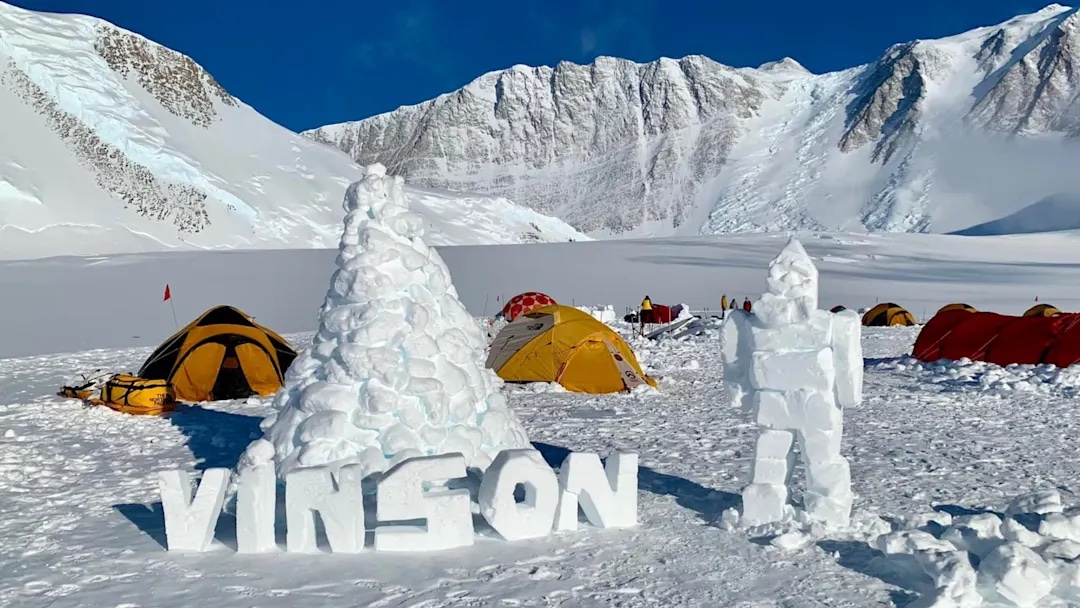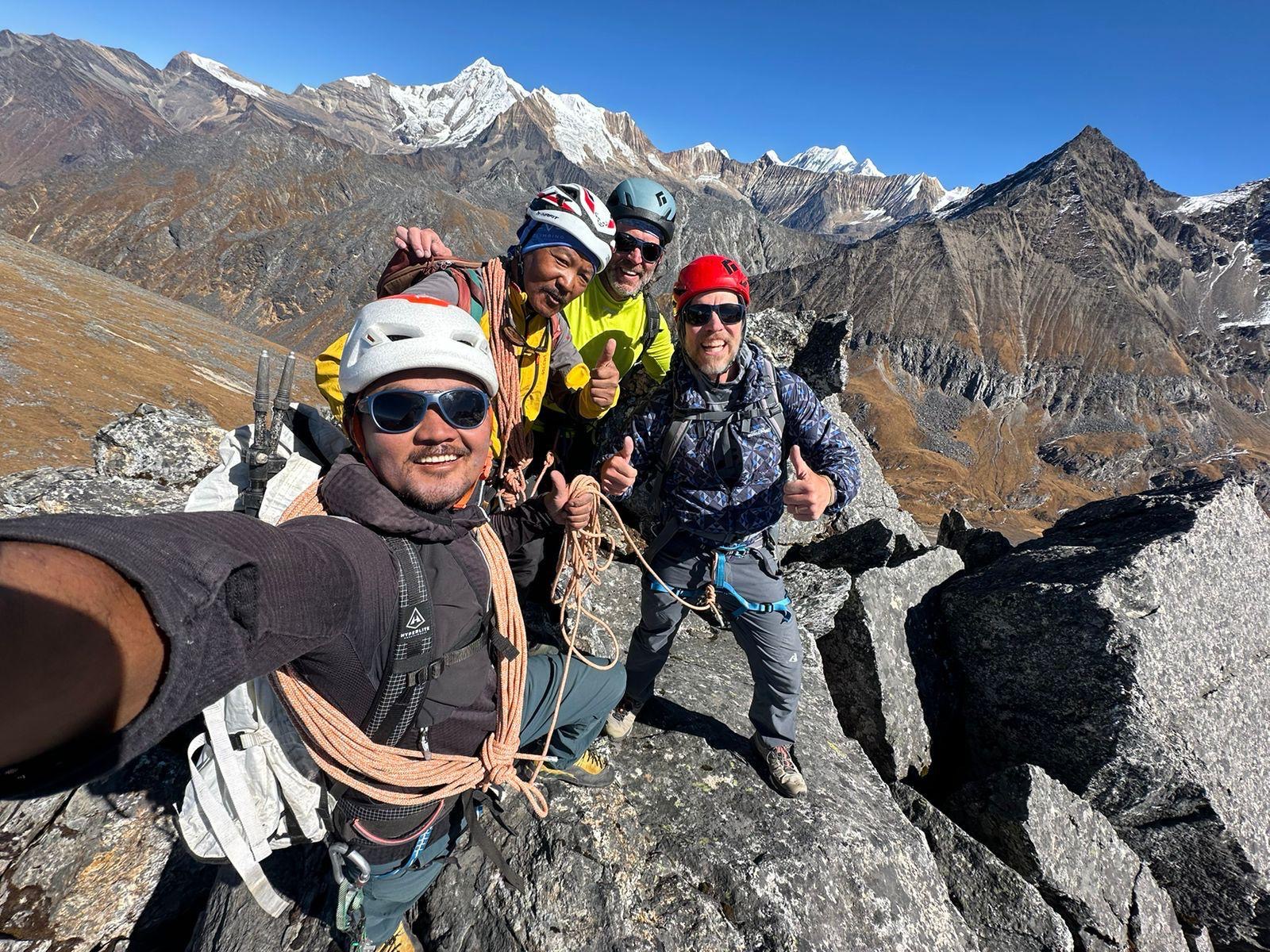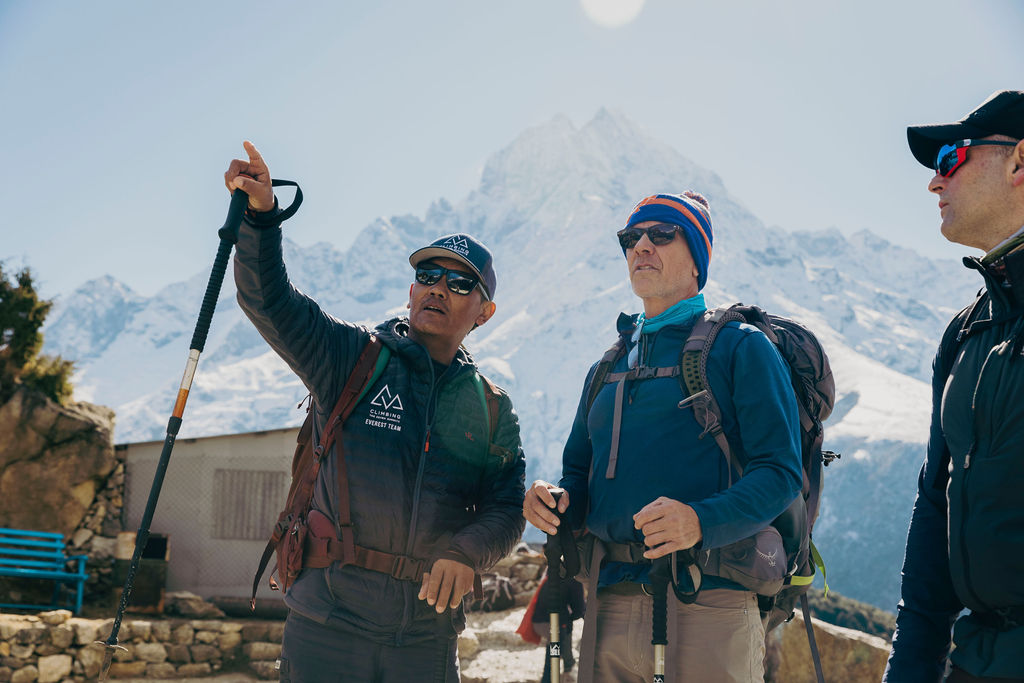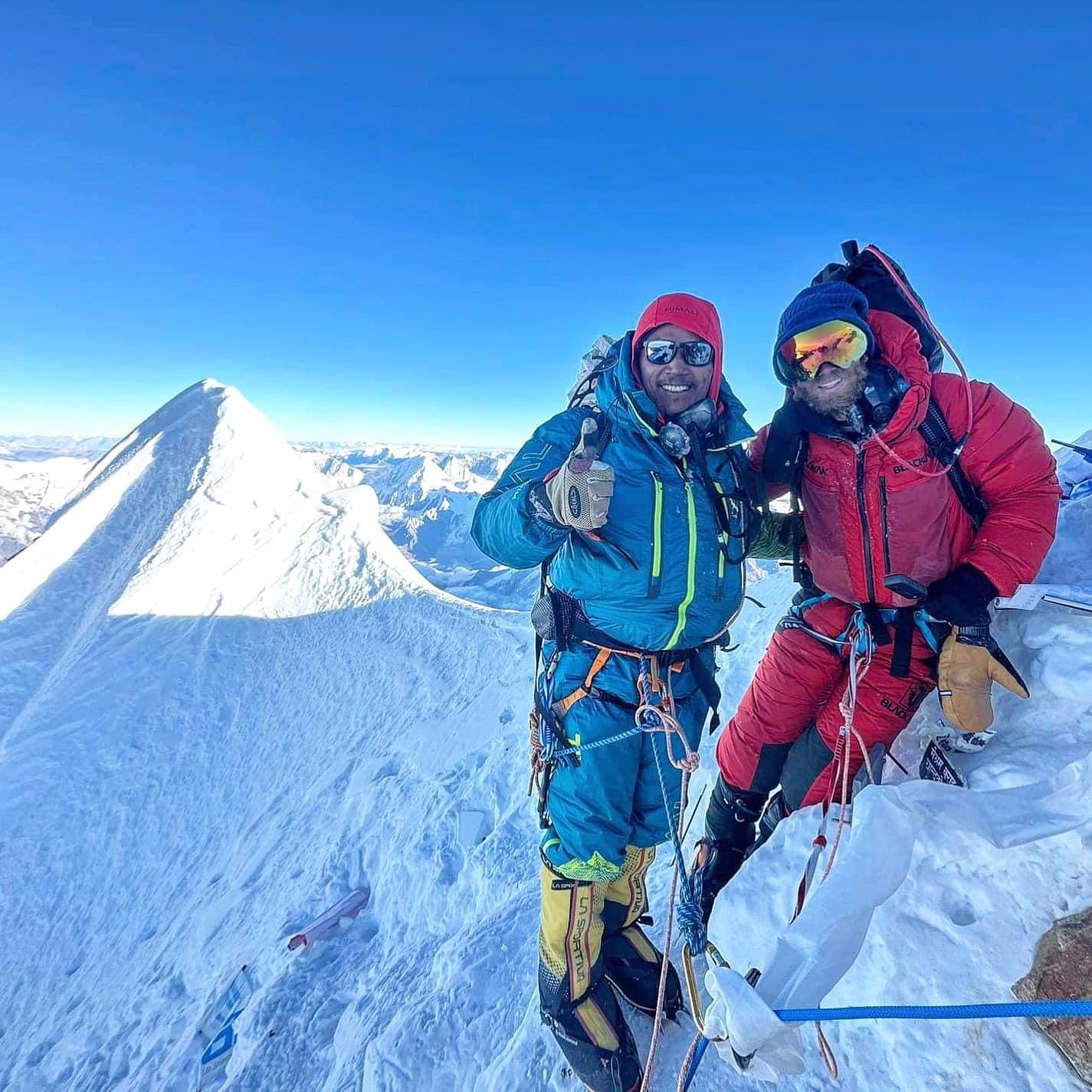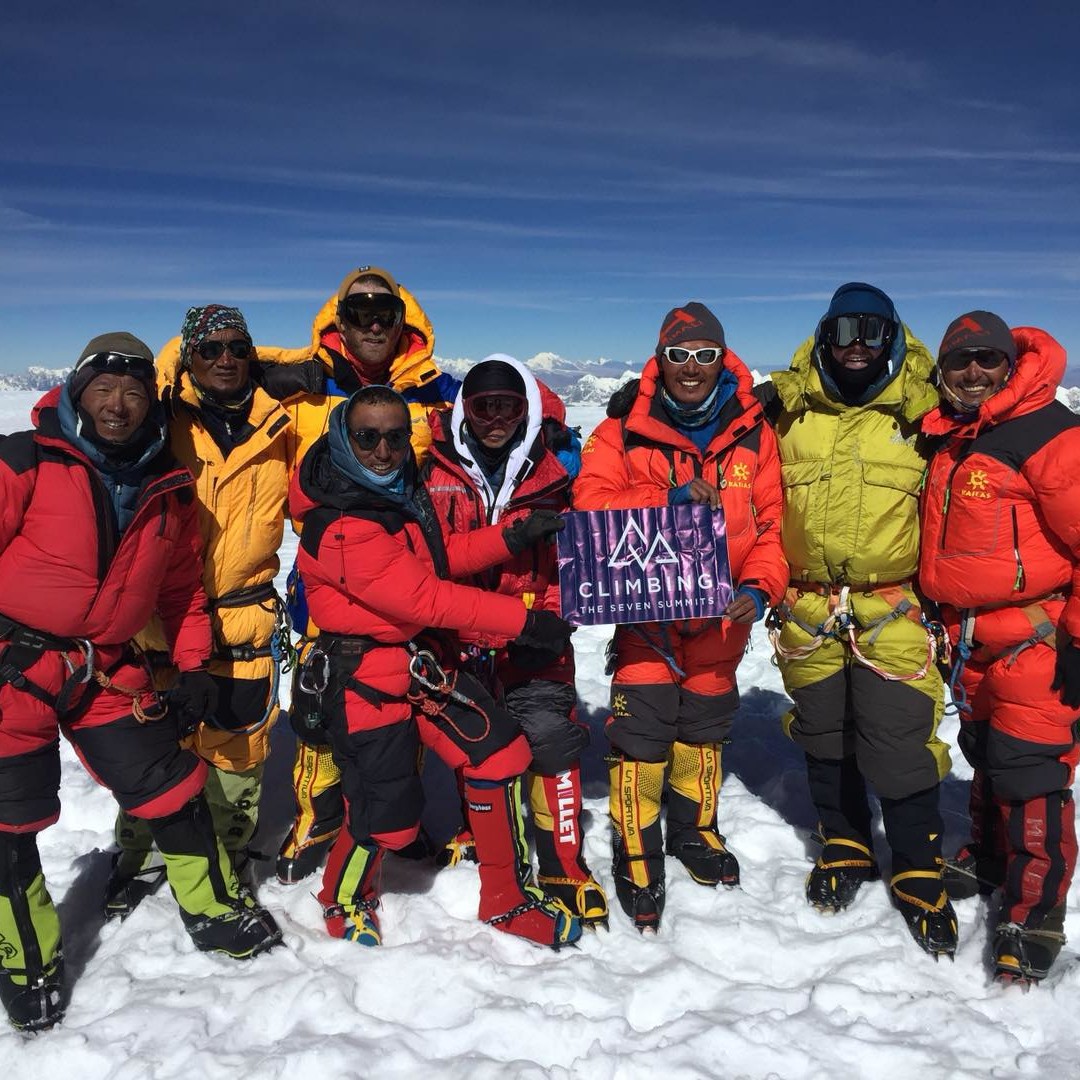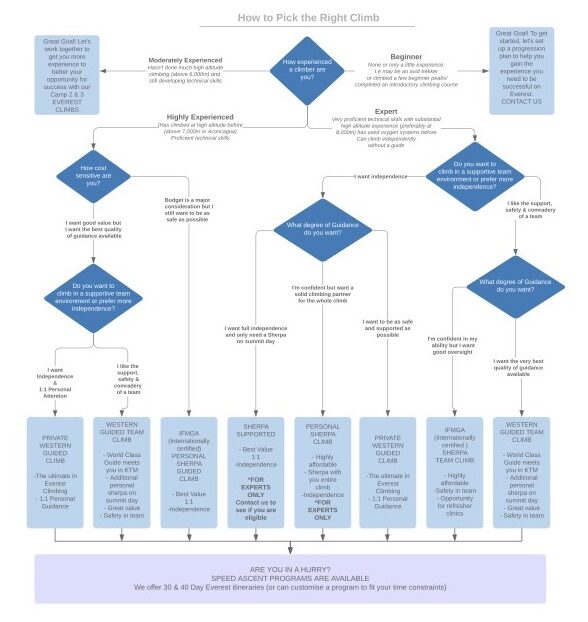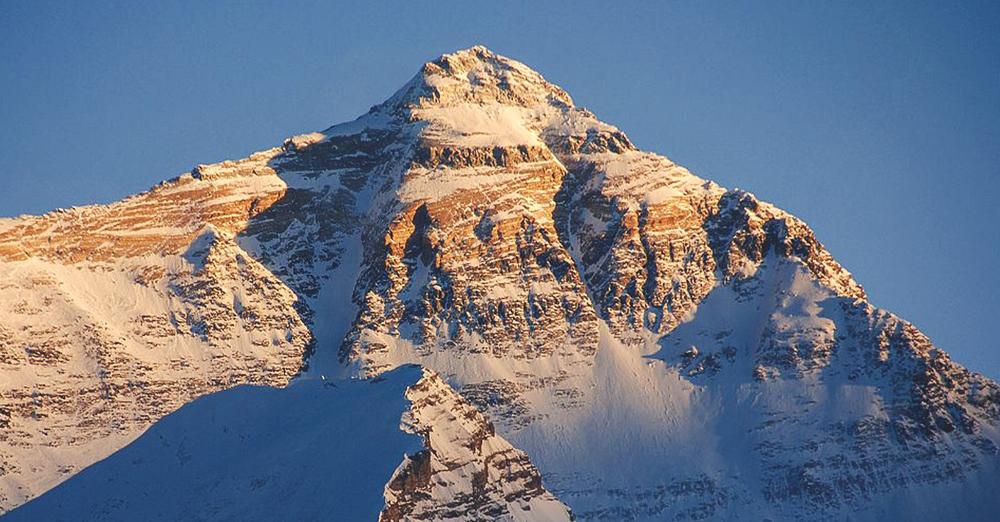First Vinson Team Arrives in Antarctica
Our first Vinson team of the season has arrived! The crew gathered in Punta Arenas, Chile, for gear checks, a team briefing, and our signature welcome dinner. Early this morning, the team flew to “the ice” at Union Glacier Camp under blue skies and calm weather. With calm weather on the horizon, they are planning to fly directly to Vinson Base Camp after a quick layover at Union Glacier.
Here we go! Sending the team ample sunshine and safe climbing conditions for our first Vinson expedition of the season!
Thank you to guides Nani S. and Mike B. for sending along these photos.

Team dinner in Punta Arenas, Chile
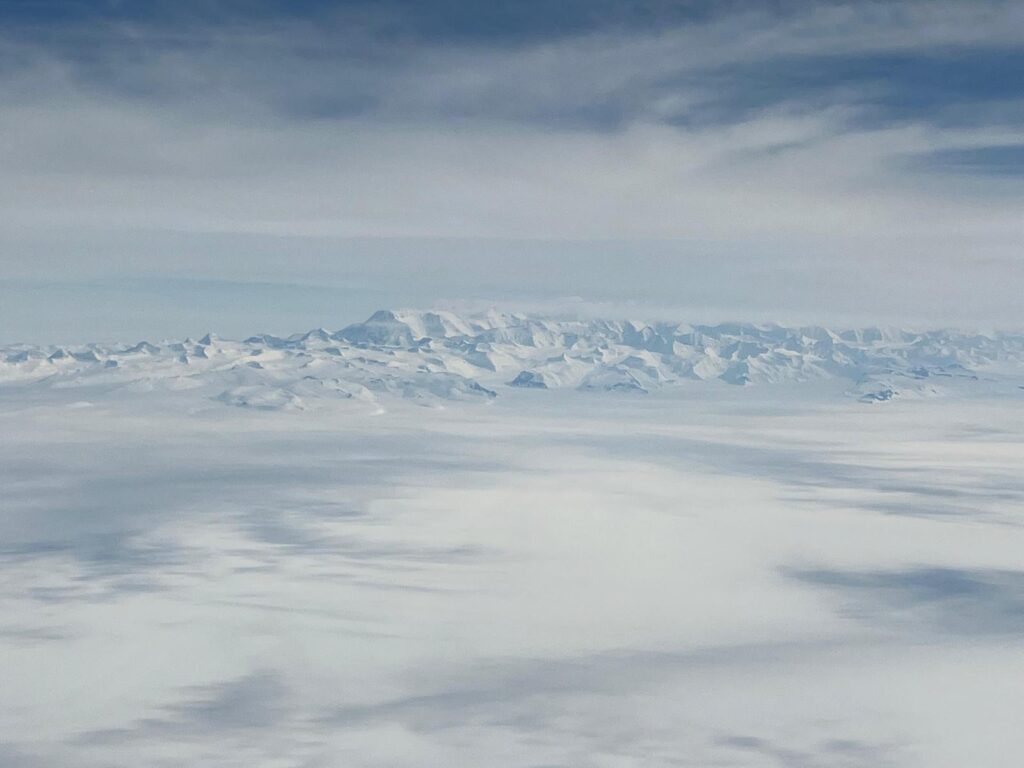
First look at Antarctica!
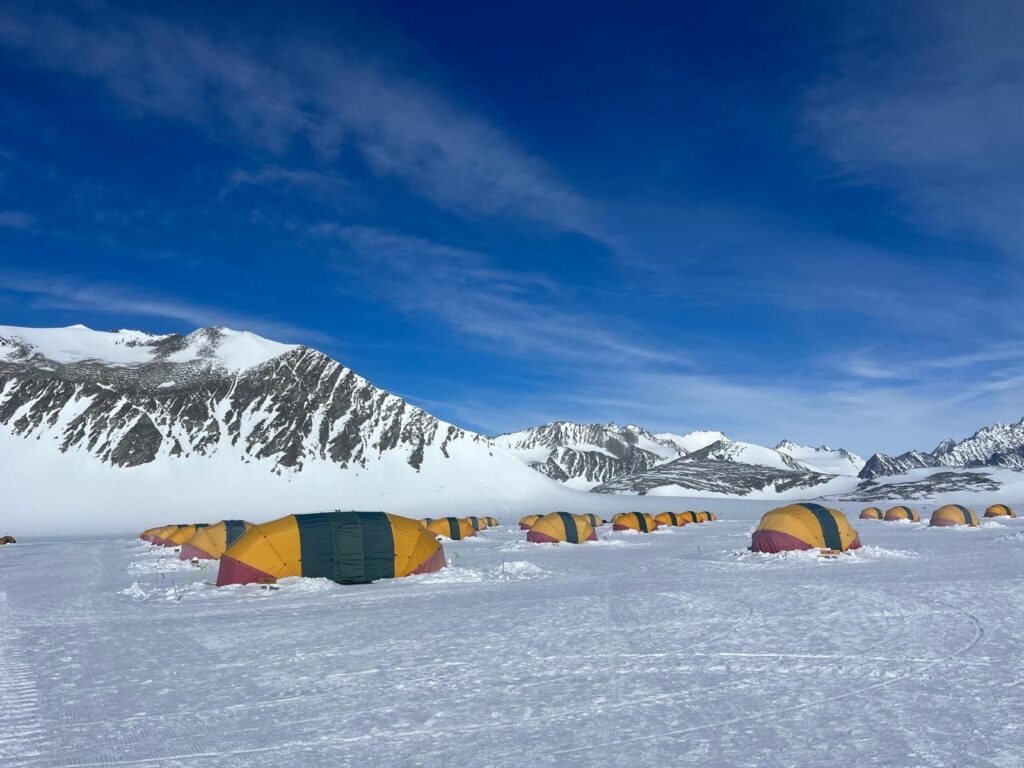
Here we go! Arriving at Union Glacier!
Family-Friendly Adventures with Climbing the Seven Summits
Family-Friendly Adventures with Climbing the Seven Summits
At Climbing the Seven Summits, we believe that adventures are best when shared. That’s why we’ve designed select expeditions to welcome friends and family to join you for all or part of your journey. These experiences not only deepen the joy of your adventure but also foster a greater understanding of the mountaineering world for your loved ones. Whether they’re tagging along for the trek, enjoying luxurious add-ons, or simply celebrating your success afterward, these trips are crafted to create lifelong memories together. So, why not bring them along and turn your next climb into a shared adventure of a lifetime?
Why Bring Family Along?
Inviting friends and family on your expedition offers more than just companionship—it enriches the entire experience. Sharing a once-in-a-lifetime journey with loved ones not only strengthens bonds and eases the challenges of time apart but also gives them a front-row seat to your expedition, fostering a deeper appreciation for mountaineering and building excitement for future adventures together. From cheering you on from Everest Base Camp to joining in post-climb celebrations in Ecuador or Tanzania, their support can boost morale and create a shared sense of accomplishment.
Mount Everest: Sharing the Journey
Climbing Mount Everest is a monumental goal, and having loved ones nearby can elevate the experience for everyone involved. At CTSS, we’ve designed options that seamlessly align with the goals of every climber—whether you’re aiming for the summit, tackling a partial climb to Camp 2 or Camp 3, taking on our 3 Peaks program, or climbing Lobuche. Family and friends can join in on the journey, experiencing the thrill of the expedition and providing invaluable support.
CTSS offers several ways for friends and family to be part of the Everest experience:
Everest Base Camp Trek & Stay: Family and friends can join you on an unforgettable journey through lush valleys, vibrant rhododendron forests, and dramatic Himalayan landscapes. This iconic trek not only brings them to the base of the world’s tallest peak but also offers a deep immersion into the local Sherpa culture. Along the way, trekkers will pass through picturesque villages like Namche Bazaar and Tengboche, where they can visit Buddhist monasteries and soak in spectacular views of Everest, Lhotse, and Nuptse. The pinnacle of the experience comes with two nights spent at Everest Base Camp proper, where your loved ones can witness the high-altitude atmosphere of the mountaineering community. From mingling with climbers to exploring icefalls, it’s an adventure that offers both physical challenges and cultural enrichment.
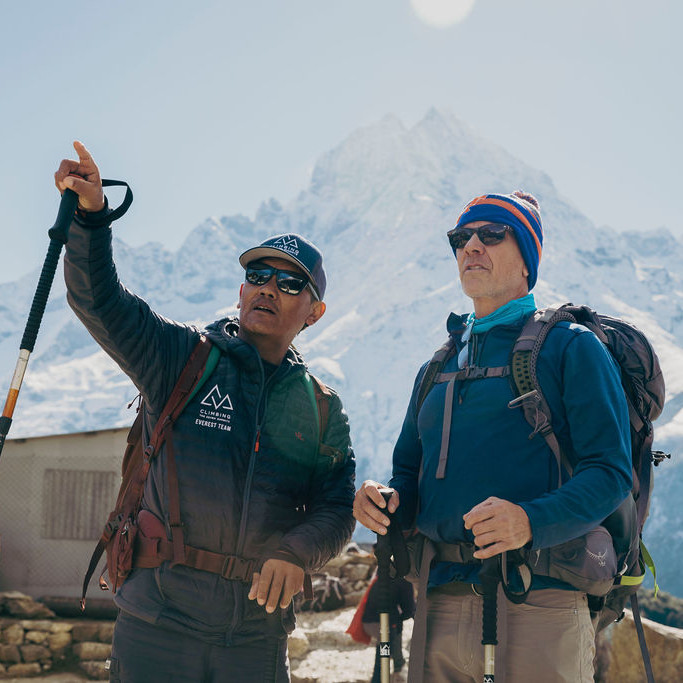
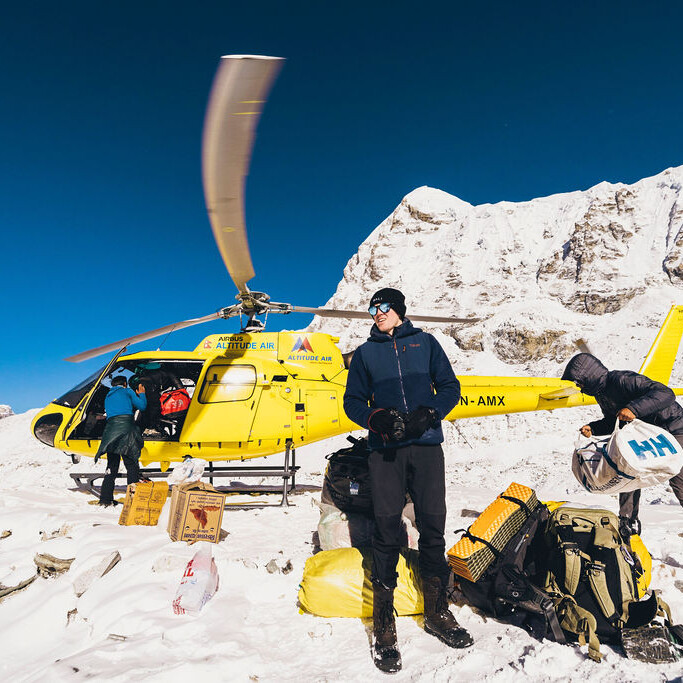
Rugged Luxury: Trek in style with guided support from an Everest summiteer as we pull out all the stops for our signature luxury trek to Everest Base Camp. Stay in 5-star accommodations and top mountain lodges. Like our traditional Everest Base Camp Trek & Stay, our Rugged Luxury trekkers will enjoy exclusive access to Everest Base Camp, which most trekkers never reach, and spend two nights in luxury geodesic dome tents. Celebrate with a champagne toast on the Khumbu Glacier, join a beginner-friendly ice climbing clinic, and even sip the world’s highest cappuccino. For the ultimate luxury, skip the hike down with a helicopter flight back to Kathmandu, where you can unwind with a massage and enjoy a farewell dinner featuring Nepalese cuisine at a top restaurant.
Lobuche East: If your family and friends are looking for an introductory or beginner-friendly mountaineering experience, they are welcome to join you on your acclimatization climb of Lobuche East (20,075ft/6,119m). Known for its breathtaking summit views of the Everest massif, Makalu, and Ama Dablam, it’s often considered one of the best summits in the Himalayas. This climb combines rock, snow, and ice, with steep fixed lines and excellent training for bigger, more technical peaks. It’s ideal for first-time Himalayan climbers familiar with crampons, ice axes, and harnesses. A training refresher will be offered at Lobuche Base Camp before the ascent.

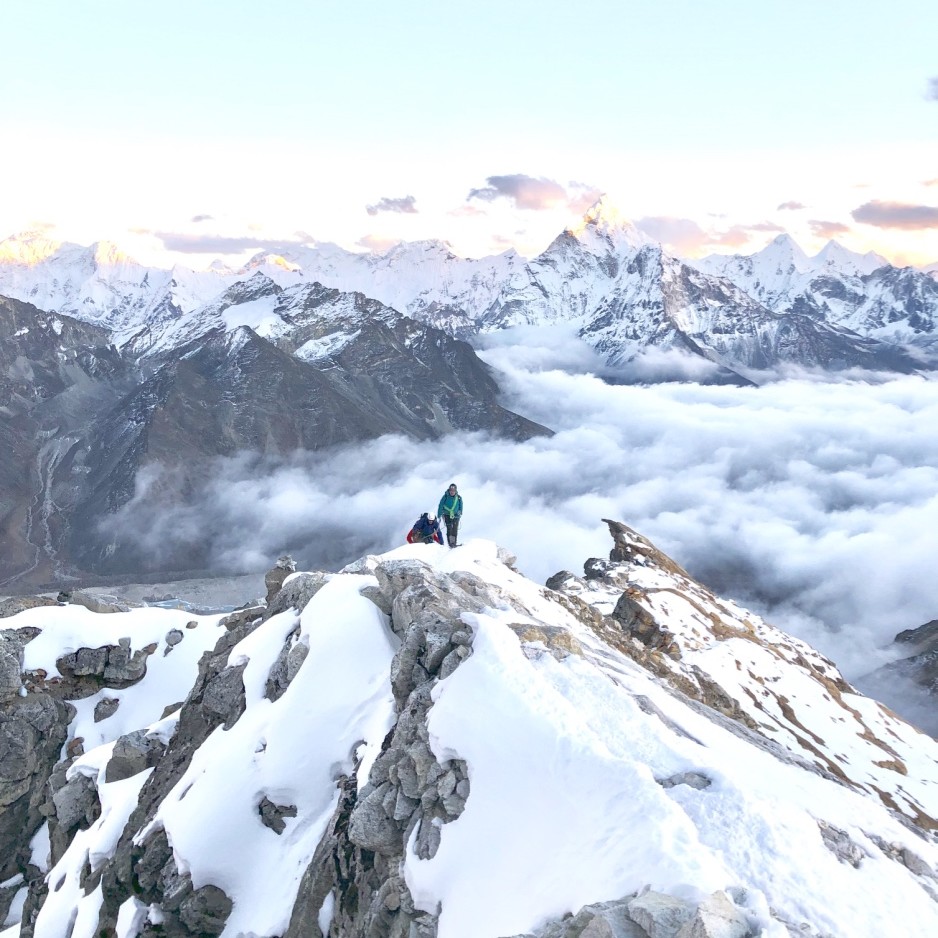
3 Peaks (Lobuche, Pokalde, and Island Peak): For the more ambitious, our 3 Peaks program will take your companions on an epic journey through some of the Khumbu’s most iconic peaks: Lobuche East, Pokalde (19,048ft/5,806m), and Island Peak (20,209ft/6,160m). Starting alongside you on Lobuche, they’ll then accompany you to Everest Base Camp for the true Everest experience alongside summiteers. After their two-night stay at base camp, they’ll split off to trek and summit Pokalde. Finally, they cross into the famed Imja Tse Valley and ascend Island Peak, which offers some of the best summit views the Himalayas have to offer. This expedition is perfect for climbers eager to take on a multi-peak challenge in one of the most stunning regions on Earth. Climbers should be familiar with crampon and ice axe use. We will run a training refresher at Lobuche Base Camp before the ascent to dust off any cobwebs.
Extended Stay Options: For those wanting to stay more than two nights or take on a climbing objective of their own, we offer extended stays at Everest Base Camp. Whether an additional night or the entire expedition season, our team can organize an extended stay for your support team.
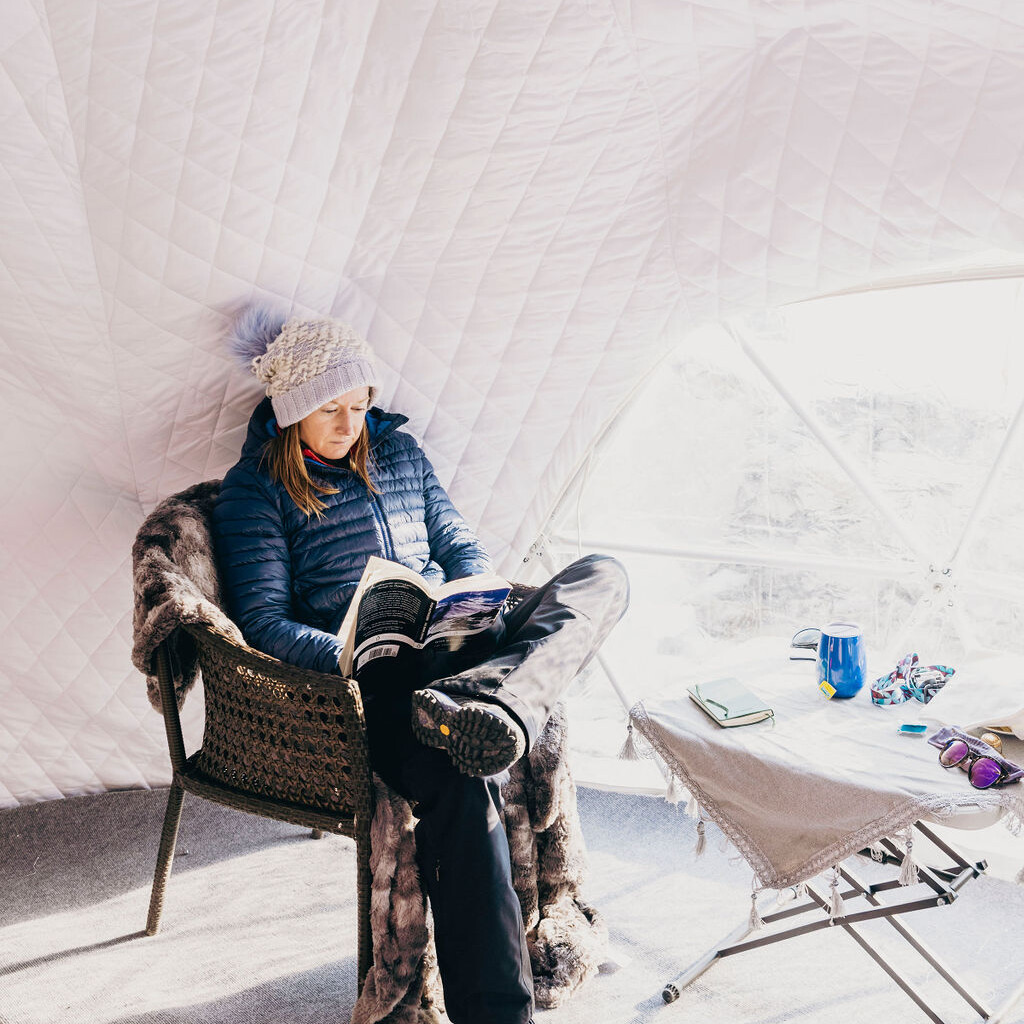
Mount Kilimanjaro: Safari and Zanzibar Getaways
Climbing Africa’s highest peak is a monumental achievement, but the adventure doesn’t have to end there. Our post-expedition add-ons beckon you to stay and savor the culture and landscapes of Tanzania and invite your friends and family to join in the experience.
- 3-Day African Safari: Explore the stunning landscapes and wildlife of Tarangire National Park, known for its ancient baobab trees and large elephant herds. You’ll also spot giraffes, zebras, and lions as you drive through open savannahs. Then, journey to the Ngorongoro Crater, often called Africa’s “Eden.” This UNESCO World Heritage Site is home to a diverse array of wildlife, including the elusive black rhino, lions, and flamingos gliding across soda lakes. With dramatic volcanic scenery as your backdrop, your safari will feel like stepping into a wildlife documentary. Each night, relax in luxury lodges or camps where gourmet meals and campfire stories await.
- 4-Day Zanzibar Getaway: After the challenge of Kilimanjaro, indulge in total relaxation on Zanzibar’s world-famous beaches. Sink your toes into soft, white sand and float in the warm, turquoise waters of the Indian Ocean. Explore Stone Town, another UNESCO World Heritage Site, where history comes alive through winding alleyways, bustling markets, and a fusion of Swahili and Arabic architecture. For a livelier vibe, head to Nungwi, known for its vibrant nightlife and beach parties under the stars. Whether sipping cocktails at sunset or diving among coral reefs teeming with marine life, Zanzibar offers the perfect mix of adventure and luxury.
For those craving more, we offer custom luxury itineraries such as safaris in the Serengeti, gorilla trekking in Rwanda, or even visiting Victoria Falls. Whatever your dream African experience, CTSS can make it happen!
Our Ecuador Volcanoes expedition climbs Cayambe (18,996ft/5,790m) and Cotopaxi (19,347ft/5,897m), with the opportunity to add on a third Ecuadorean giant, Chimborazo (20,548ft/6,263m). It is an ideal choice for climbers who want to experience high-altitude climbing while enjoying creature comforts like haciendas, mountain huts, and hot springs, making it a perfect expedition for friends and family to join.
- Join Acclimatization Hikes and Stay in Mountain Huts: Family and friends can share in the adventure by following the same acclimatization itinerary and enjoying scenic hikes through Andean landscapes. These treks lead to charming mountain huts where non-climbers can relax by a crackling fire, enjoy hearty meals, and soak in the beauty of Ecuador’s volcanic peaks before reuniting with you after your climb to celebrate with a shared meal, panoramic views, and stories of adventure.
- Explore Quito and Hot Springs: Non-climbing companions can immerse themselves in the vibrant culture of Quito, a UNESCO World Heritage Site. Wander through its historic streets, visit ornate churches, and sample local cuisine in bustling markets. For a more tranquil escape, they can relax in the soothing hot springs of Papallacta, surrounded by lush cloud forests. Visits to centuries-old haciendas offer a taste of colonial history and luxurious hospitality, making their stay as memorable as your climb.
- 4-Day Galápagos Adventure: End your journey with a once-in-a-lifetime Galápagos Islands adventure. Follow in Darwin’s footsteps as you explore this ecological paradise, encountering giant tortoises, blue-footed boobies, and marine iguanas. Snorkel with sea lions, hike volcanic landscapes, and marvel at the islands’ unique biodiversity. Whether on a luxury cruise or staying on the islands, this bucket-list experience offers the perfect blend of relaxation and discovery.
No matter what your companions seek—adventure, relaxation, or cultural immersion—Ecuador offers a diverse and unforgettable experience for everyone.
Pico de Orizaba: Culture, History, and Adventure
Our Orizaba Express expedition is another family-friendly option, blending cultural exploration with adventure in the heart of Mexico. For this itinerary, your loved ones can join you before, during, or after the climb to experience the rich culture, famous archeological sites, and delicious eats.
- Discover Teotihuacan’s Ancient Pyramids: A must-see for history lovers, Teotihuacan offers a fascinating journey through one of Mesoamerica’s greatest civilizations. Family and friends can explore this sprawling archaeological site, climb the iconic Pyramids of the Sun and Moon, and walk along the Avenue of the Dead while learning about its cultural significance.
- Immerse in Mexico’s Vibrant Culture: Beyond Teotihuacan, companions can dive into the lively streets of Mexico City. Visit world-class museums like the National Museum of Anthropology, stroll through neighborhoods such as Coyoacán, or relax in historic haciendas. Foodies will delight in Mexico’s diverse culinary scene, sampling everything from street tacos to gourmet dishes, making every meal an adventure.
Whether seeking cultural exploration or quiet relaxation, companions can enjoy a meaningful journey while you pursue your climbing goals.
Aconcagua Season Begins!
We've officially kicked off our season on Aconcagua with a private trip for our favorite father-daughter duo. Emma and Sam, along with CTSS guide Nani, summited Aconcagua on December 9th at about 3pm local time via the 360 Route.
With this successful summit to the Roof of the Americas, Emma and Sam have summited five of the Seven Summits and are already en route to Vinson, hoping to have another chance to stand on top of one of the Seven Summits.
Thank you to Nani for sharing these photos with us!

Emma and Sam on the summit of Aconacgua!
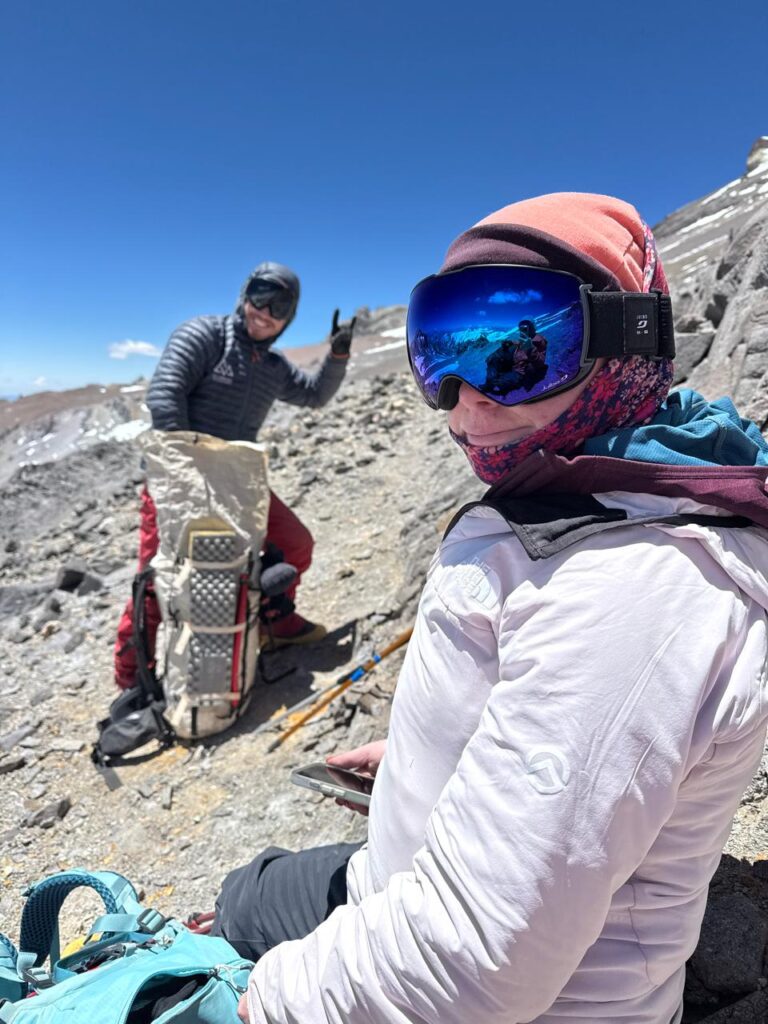
Emma and guide Nani, who is keeping everyone's spirits high!
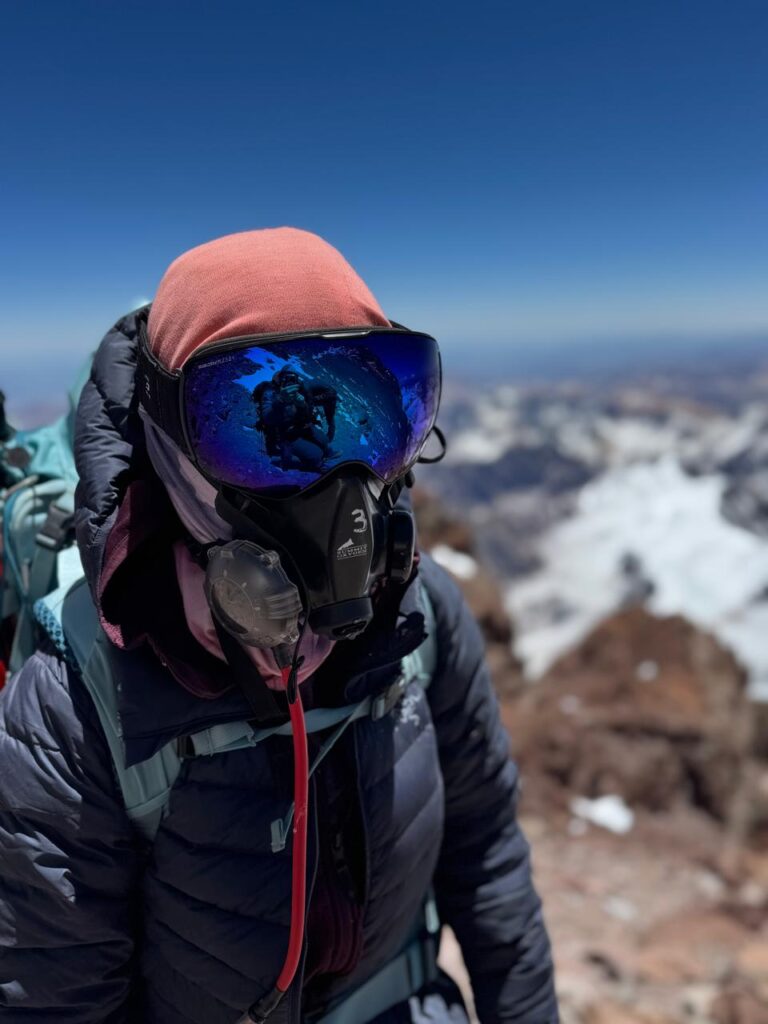
Emma is on her way to the Roof of the Americas! Next up... Vinson!
Summits and Celebrations in Ecuador
Our Ecuador climbing season is going strong with a new team in the field. While they're busy climbing, we wanted to share a quick look back at a few of the summits we've already celebrated this year on Cotopaxi and Cayambe.
If you've been eyeing our Ecuador Volcanoes program, you're in good company. This expedition is one of our personal favorites and it's also well loved by all of you! But here's the best part: during our 11-day itinerary, you get to climb not one but two high-altitude gems and experience world-class climbing and hospitality at its finest, which means you get some serious bang for your buck.
Thank you to CTSS Guide Edgar P. for sharing these shots with us.
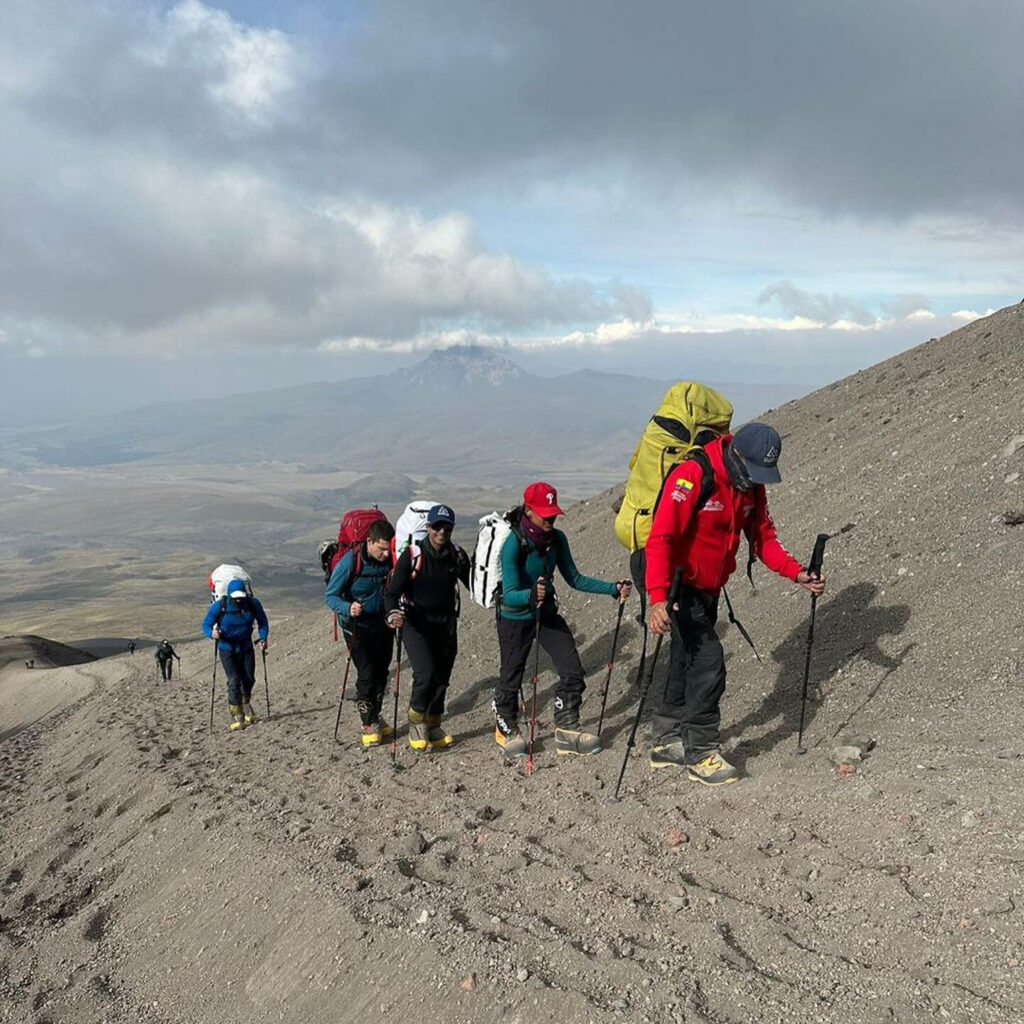
Going up! This wildly popular expedition tackles two high-altitude gems, Cayambe (18,996 feet) and Cotopaxi (19,347 feet)

On top! Kudos to all of our CTSS climbers.
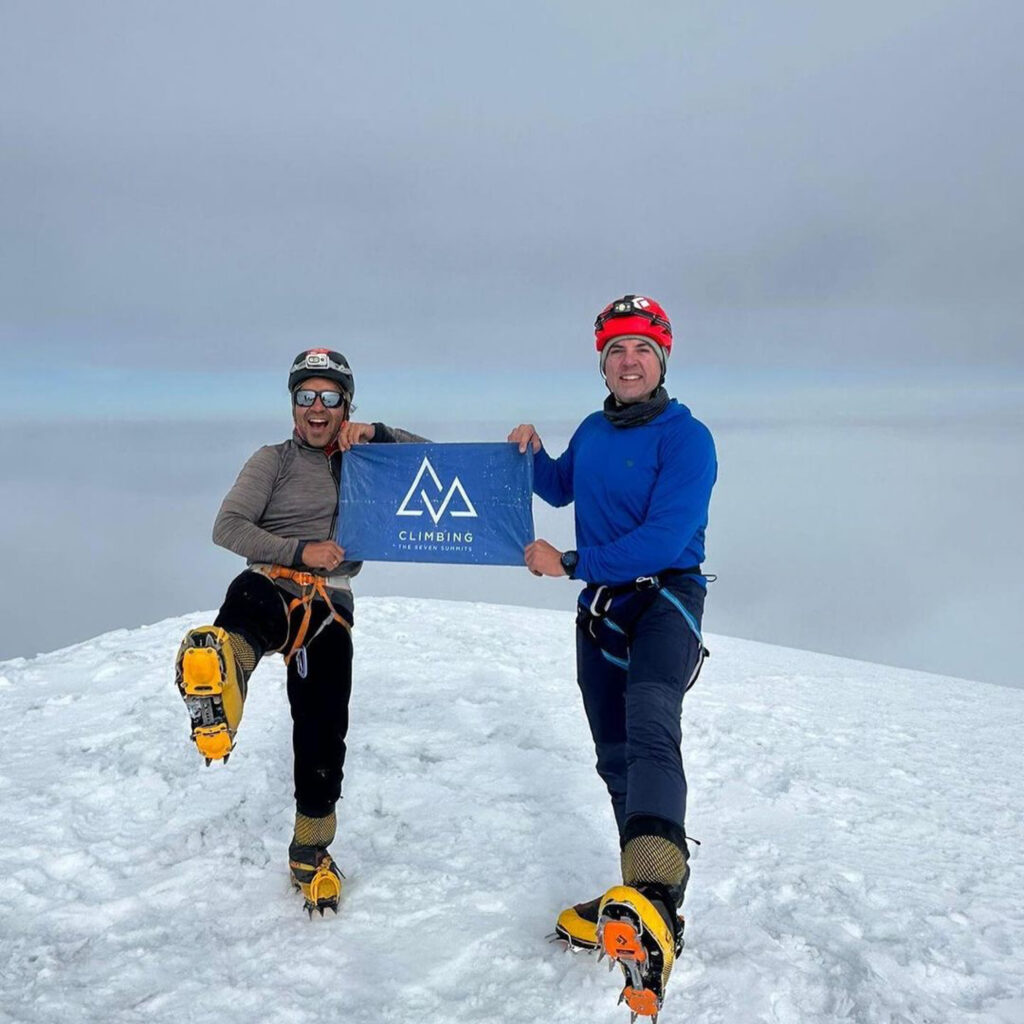
There is always time for a little dance on the summit! Thank you, Edgar, for your guidance, leadership, and energy.
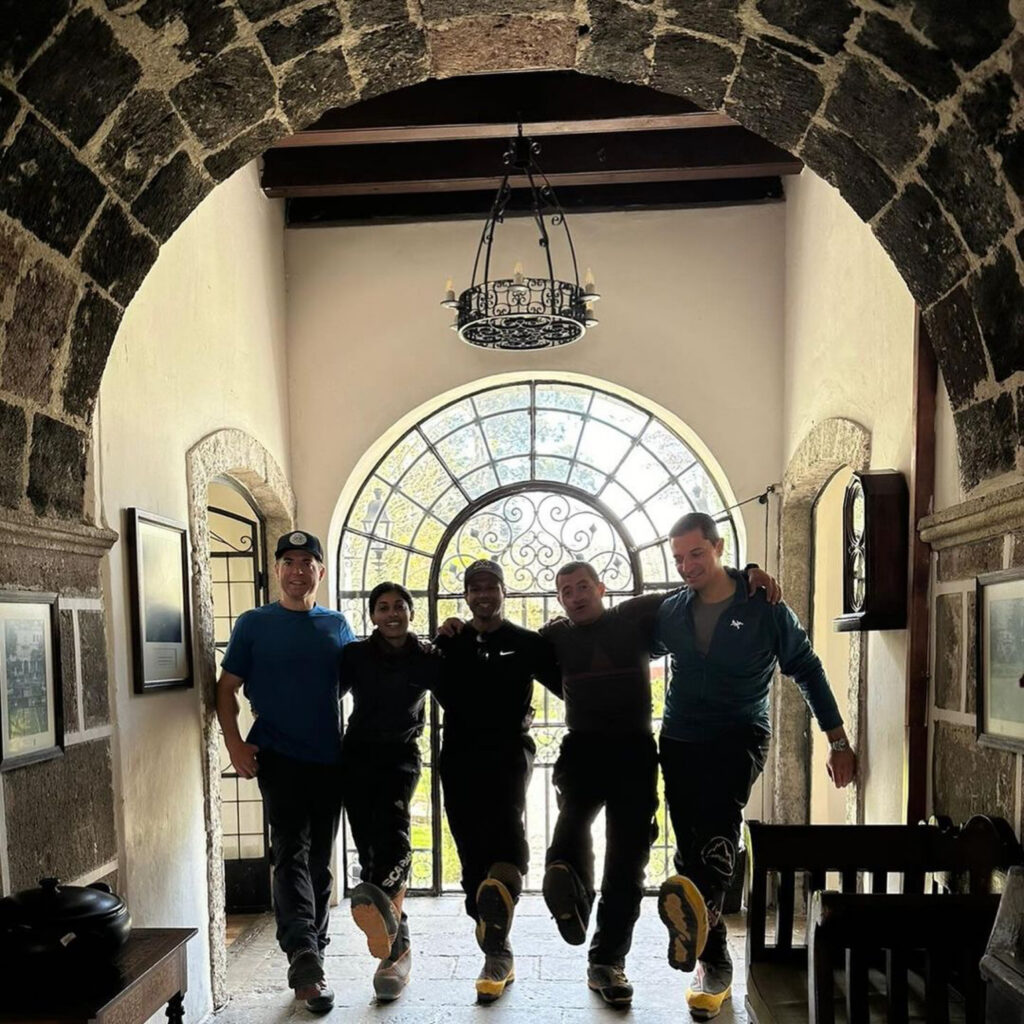
They're still dancing, even after the summit! Now it's time for hot springs and relaxation.
Our Inaugural First Ascent in the Himalayas
Our First Ascent team members are safely back in Kathmandu and on their way home. They had a great time exploring some extremely remote and hidden ranges in western Nepal and were able to tag two first ascents despite deep snow and weather hindering their main objective. One of our climbers reflected on their experience and shared...
"We got two of the three first ascents on this trip! I wanted to tell you that this expedition has been amazing! The team you put together and the team that Tendi led was outstanding - couldn't have asked for anything more! For me, the best part about this entire expedition was being by ourselves! We were obviously some of the first Westerners in this area, and not having other teams around was absolutely astounding. Tendi is a master and led a superb team - thank you so much for putting this together... you guys run a first-class operation! Thanks again, Mike, for your dedication and philosophy of pure climbing - you and your CTSS team really are keeping our sport pure!" - Matt D.
If you want to join the ranks of First Ascenders to tackle a brand new, top-secret peak in 2025, click here to learn how you can join this exclusive team. Space is limited, so send us an inquiry today to express your interest.
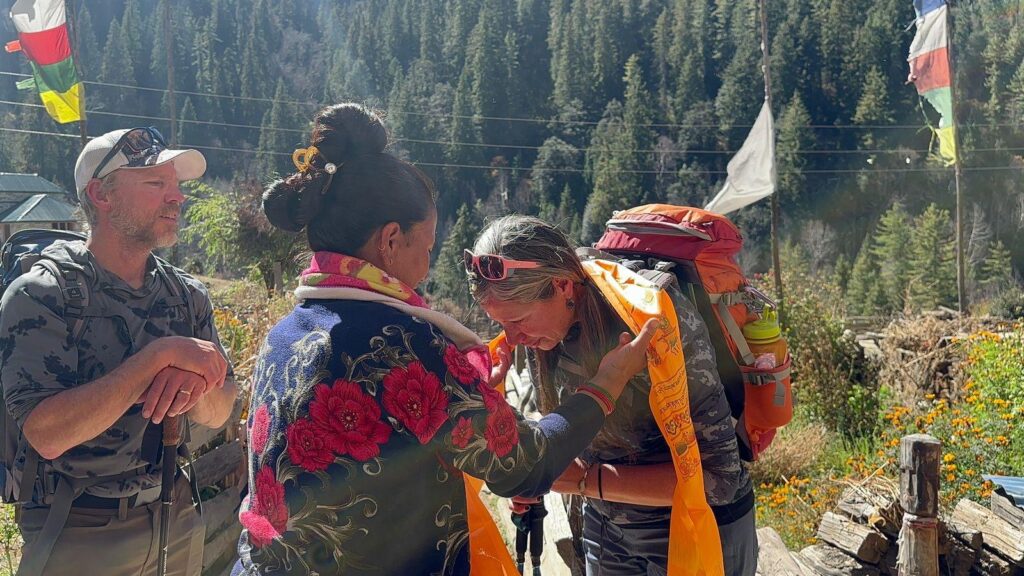
The people of Nepal are incredibly gracious and kind to all of our climbers.
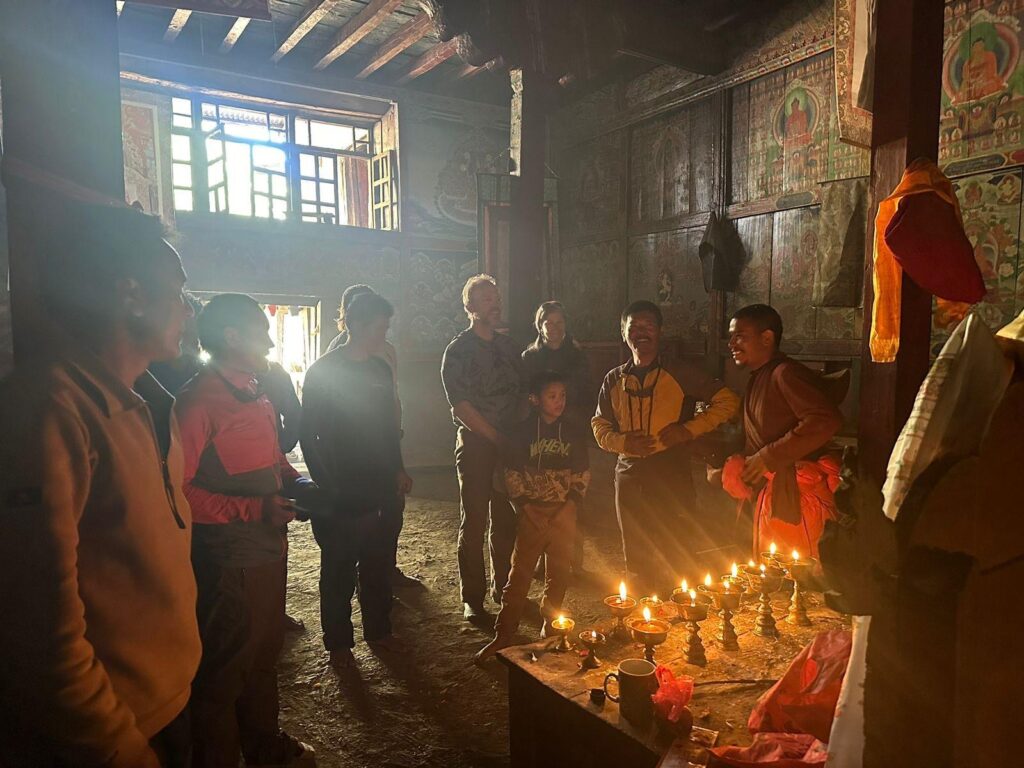
A Puja ceremony for our First Ascent team.
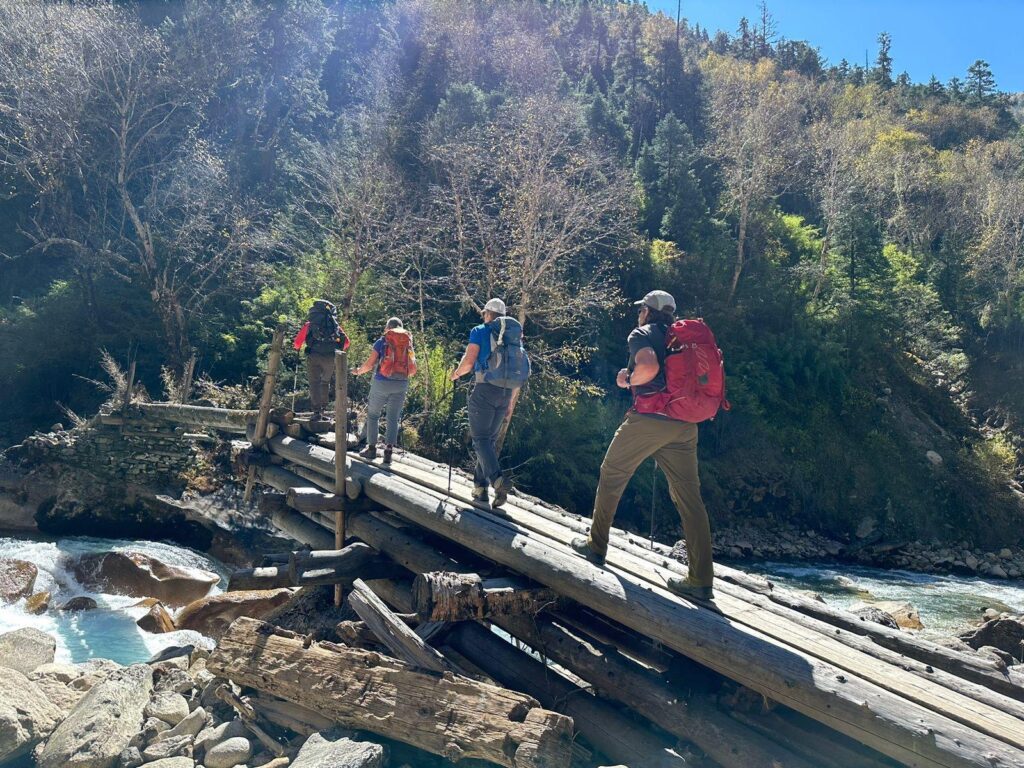
Let the adventure begin! Being on a First Ascent team means getting off the beaten path into the remote parts of Nepal.
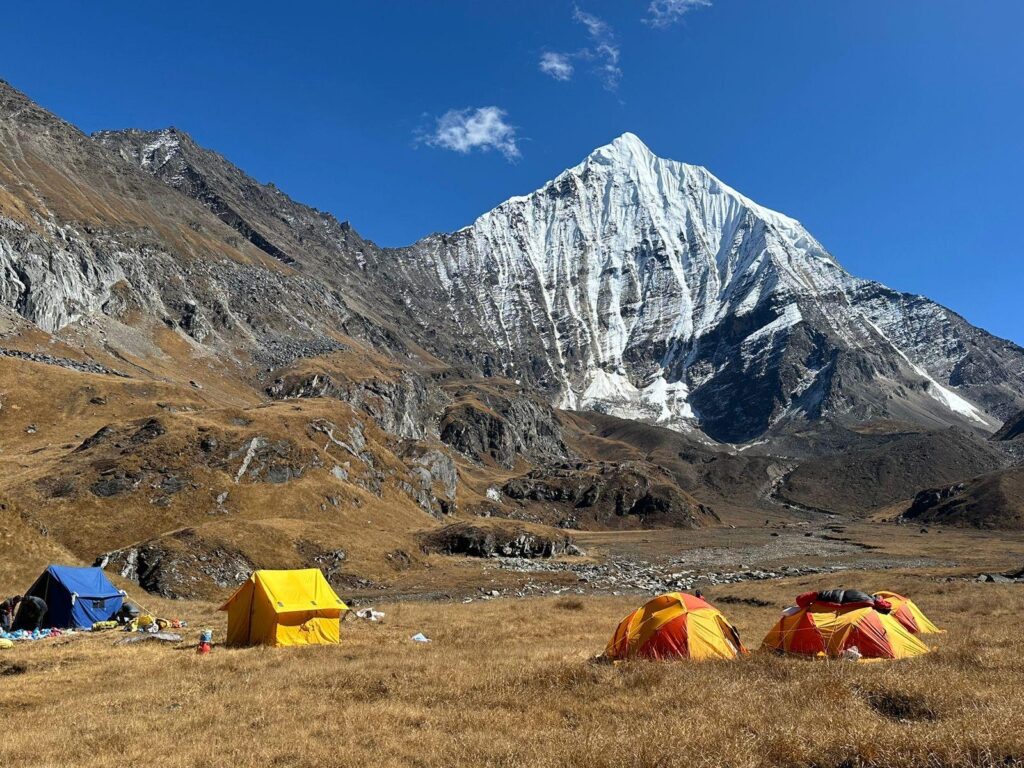
We ensure all our trips employ our Marginal Gains Philosophy, including our First Ascent program!
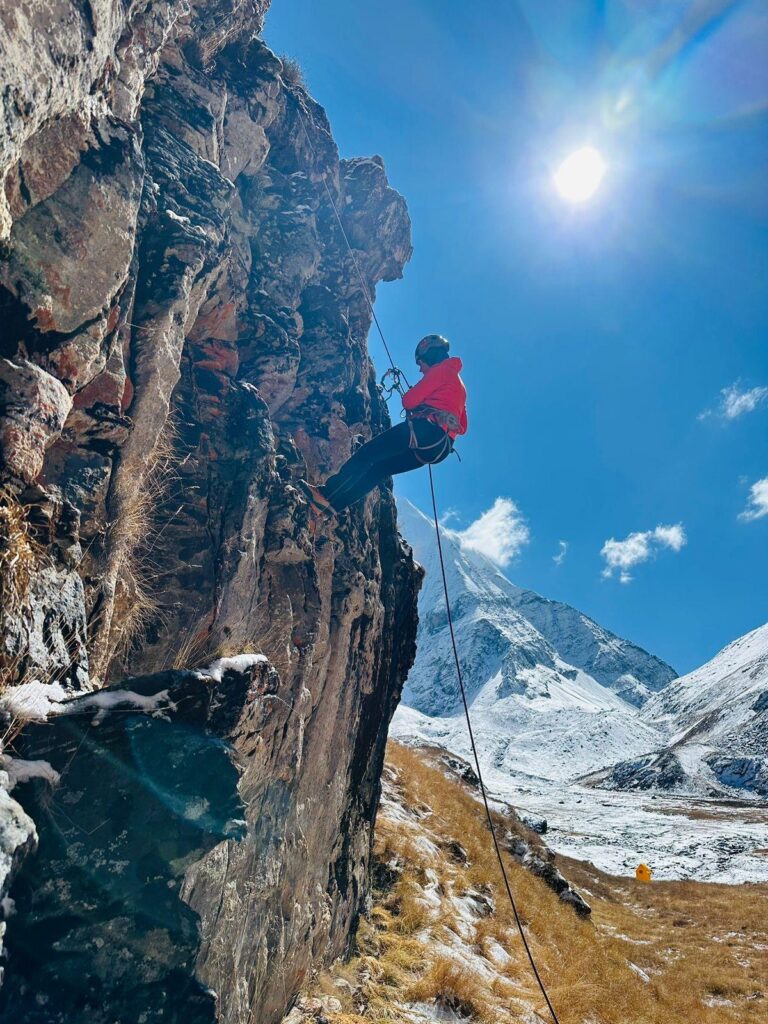
Training in the Himalayas for future objectives and ascents.
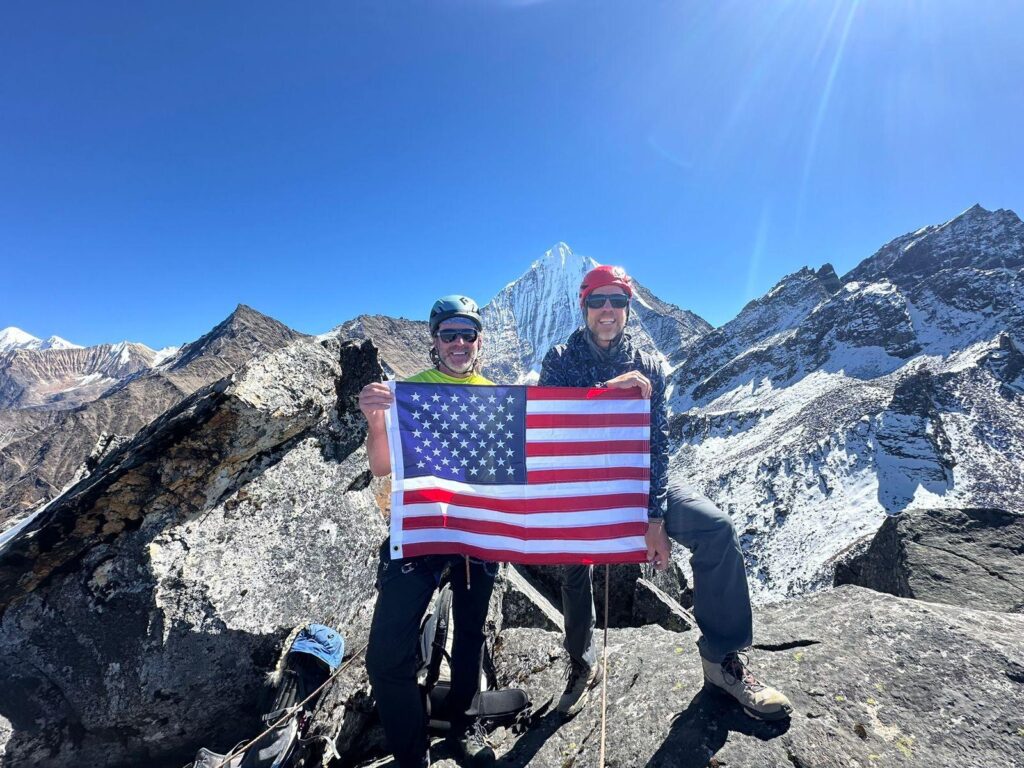
That's one for the history books! Congrats to our inaugural First Ascent team!
The Himalayas: Expeditions for Every Kind of Adventurer
The Himalayas: Expeditions for Every Kind of Adventurer
When people think of Himalayan climbing, they often picture the towering heights of Mount Everest, but the Himalayas offer a world of opportunities, from base camp treks and approachable intermediate peaks to the otherworldly giants like Ama Dablam, Manaslu, and Lhotse that can build your confidence, community, and climbing skills throughout your mountaineering journey. Whether you’re aiming to one day stand atop Everest or simply want to experience the beauty and culture of Nepal, there’s a perfect CTSS adventure for you in the Himalayas.
Get to Know the Himalayas through Treks and Advanced-Beginner Expeditions
If you’re new to the world of Himalayan climbing, a trek is a perfect way to dip your toes in without the full commitment of an expedition. Our Everest Base Camp Trek & Stay is not just a legendary adventure; it also offers incredible exposure to the high-altitude environment with unique opportunities to witness Himalayan climbing at its finest as you trek alongside our summit teams. Along the way, you’ll experience the breathtaking beauty of the Khumbu Valley, learn about Sherpa culture, and get a feel for high-altitude life. And don’t forget that we also offer our Rugged Luxury Everest Base Camp Trek & Stay in our famous, for which we’ve pulled out all the stops to ensure you can experience a dash of refinement in extremely remote places.
If you want to learn more about our Rugged Luxury Everest Base Camp Trek & Stay, join us in December for our live webinar with CTSS co-owner Caroline Pemberton. Click here to register.

For those eyeing bigger mountains down the line, maximize your time in Nepal with an advanced beginner summit climb like Lobuche East (6,119m). Our Lobuche climbers still have the opportunity to trek to and stay at Everest Base Camp while also honing your basic mountaineering skills like crampon use, ice axe techniques, and glacier navigation. The climbing consists of moderately steep snow and rock fixed line climbing, making it best for those with basic mountaineer skills and looking to attempt their first Himalayan climb. Once you reach the summit, you’ll know this is the first of many rewarding experiences in the Himalayas.
For an introduction to mountaineering skills that will jump-start your climbing career, check out our Alpine Academy programs.
Step Up Your Skills on an Intermediate Peak
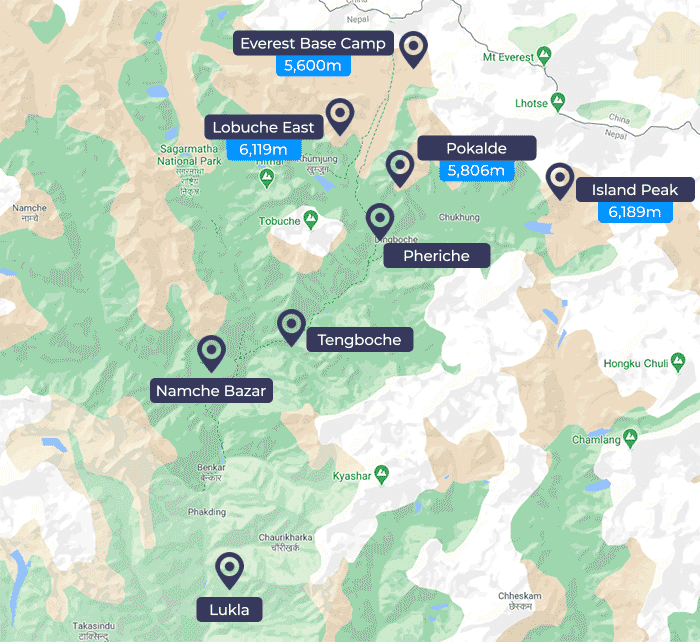
For climbers ready to advance, intermediate Himalayan peaks offer the perfect balance of adventure and skill-building. Our signature 3 Peaks expedition (Lobuche, Pokalde, and Island Peak) builds upon the standalone Lobuche itinerary to provide the challenge of steeper terrain, basic rope skills, and exposure to changing weather conditions. These climbs are designed to help you develop your comfort with altitude and technical skills—perfect for those with some climbing experience who want to deepen their connection with the Himalayas.
For those looking for a standalone objective, our First Ascent program is designed for adventure seekers hoping to climb a peak that no one has ever summited before, putting yourself well and truly in the history books. Here, you can solidify your mountaineering skills—such as dealing with altitude, building up stamina for extended expeditions, and refining your technical capabilities. In addition, you will be able to truly experience Nepal’s rugged terrain as these trips are typically more remote and do not utilize the more established infrastructure that you find along the Everest Base Camp Trek.
We can help you choose an intermediate climb that suits your abilities, strengths, and goals.
Tackle an Advanced Peak by Climbing a Himalayan Giant
These peaks offer the ultimate Himalayan experience, blending high-altitude conditions with technical sections that push your skills and endurance. Some of the top choices for advanced Himalayan climbs include Manaslu (8,163m), Ama Dablam (6,812m)—though under 8,000m, often regarded as one of the most technically demanding climbs in the region—Cho Oyu (8,188m), and Lhotse (8,516m).
If you’re looking for a dress rehearsal for a bigger objective, like Everest, summiting an 8,000m peak like Manaslu, Cho Oyu, or Lhotse will be a rewarding experience that will prepare you before you commit to spending the amount of time and money required for Everest. You’ll be climbing in the same style, dealing with similar conditions, and pushing your body to the limits—all essential skills for Everest. Don’t miss an opportunity to test yourself beforehand so you have confidence and experience for the monumental task ahead. And remember, the Nepalese government requires all climbers to have at least one climb above 7,000 meters under their belt before they can attempt an Everest summit!
However, for many climbers, a peak like Ama Dablam or Manaslu is their ultimate goal and an incredible objective in its own right. Whatever you’re aiming towards, there is no doubt that we will have an advanced climb that will help you progress or celebrate your successes in the Himalayas.
The Roof of the World: Mount Everest
At the top of many climbers’ bucket lists is the world’s highest peak, Everest (8,848m). We are proud to be the gold standard in Everest expeditions because of our safety and success rate, expert leadership, Marginal Gains Philosophy, overall value, and unique customization options. As mountaineers ourselves, we know that not every climber is the same, which is why we do not use a one-size-fits-all approach. We believe an expedition should match your experience, climbing style, and budget.
Here is an overview of the customizations we offer on Everest:
- Western Guide: Private 1:1 Climb – Personal guidance and attention, the ultimate experience.
- Western Guide: Team Climb – Connection and community with team starting in Kathmandu.
- IFMGA Sherpa Guide: Private 1:1 Climb – Best value for a private climb with independence.
- IFMGA Sherpa Guide: Team Climb – Connection and community with team, great value
- Sherpa Guide: 1:1 Private Climb – Experts who are looking for the best value and a private guide.
- Sherpa Supported: 1:1 Summit Support – Experts who only need support on summit day.

You can dive into what climb is best for you with our easy-to-use flow chart, which can help identify what expedition is the best fit for you.
Perhaps you want to experience Everest beyond base camp but aren’t quite ready to make a summit bid. Partial Everest climbs to Camp 2 and Camp 3 offer unparalleled access to the realities of climbing Everest. A climb to Camp 2 is an excellent progression step in your climbing career, and the thrill of climbing in the renowned Khumbu Icefall and through the breathtaking Western CWM will stay with you for life. Our Camp 3 climbers are offered the opportunity to use oxygen while climbing on the Lhotse Face to become familiar with the systems and gain that invaluable skill set for the future.
Tiger of the Snows Fund
At Climbing the Seven Summits, Himalayan climbing isn’t just about summiting peaks,it’s about connecting deeply with the culture, the people, and the stunning landscapes of Nepal. While we explore these sacred mountains, we are also committed to giving back to the local communities that make these experiences possible. Through the Tiger of the Snows Fund, we aim to empower the people who work tirelessly behind the scenes of the outdoor tourism industry—guides, porters, and their families—by providing access to education and essential resources.
Recently, we provided a grant to support Mrs. Yangdi Sherpa, a mother of three daughters who has faced significant hardship after losing her husband, Nima Tenji Sherpa, in 2021 while he was working on Everest with another operator. This grant enables her daughters to continue their education near their home in Lukla, a critical piece of support as Mrs. Yangdi works to provide for her family on her own. This is just one example of how our grants help promote community development and opportunities for local families facing adversity.
Whether it’s through sponsoring a worker’s continuing education or supporting a child’s school tuition, we believe that helping local communities thrive is as important as any summit. Together, we can foster a more sustainable and equitable future for Nepal, where the benefits of tourism are shared by all.
Ready to Learn More? Check Out CTSS’ Everest Experience on YouTube

